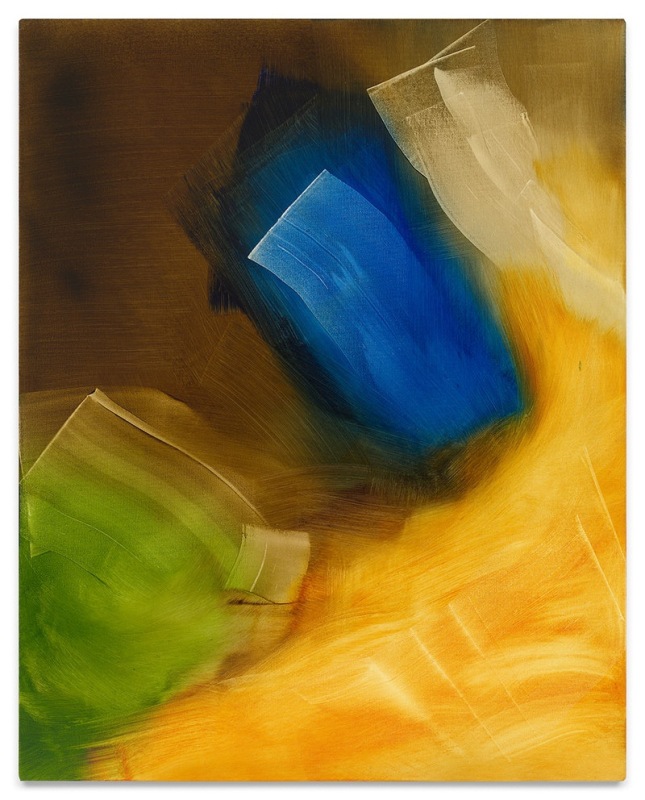Elise Ansel: Sea Change
The Shakespearian conceit governing Elise Ansel’s show (and the accompanying catalogue essay by Patricia Akhimie, Director of the Folger Institute) derives from The Tempest. Prompted by the magus Prospero, the spirit Ariel sings a mysterious dirge to Prince Ferdinand, telling him, falsely, that his father drowned in the storm:
Full fathom five thy father lies;
Of his bones are coral made;
Those are pearls that were his eyes:
Nothing of him that doth fade,
But doth suffer a sea-change
Into something rich and strange.
Ariel’s lie sends the prince into a depression, part of Prospero’s play-within-a-play, but the magical music of his song helps to explain Ansel’s painting process. She finds inspiration in the Old Masters, and, like the sea in Shakespeare, transforms what she sees. Shakespeare is talking about metamorphosis—eyes into pearls, bones into coral—while Ansel deals in another kind of transformation, the conversion of mental images into paint on canvas. She does not remake Old Master works, which might imply parody or even caricature, but uses them instead as a stepping stone.
The distinction might at first seem minor, but it is a major issue. To consider her work consistently through a bifocal lens—one half focused on her sources, the other on her paintings—is to do her a disservice. True enough, Ansel’s early work occasionally evinced compositional affinities with the paintings she studied, but over time she shed that skin of dependence. Ansel’s work demands to be considered on its own, independent of any pictorial point of departure. Why this is the case reflects a female artist’s relationship to tradition—one to which critics might say she “owes” so much. In fact, Ansel is dependent on no one but herself, and these splendid images owe nothing to anyone, especially to no man. They are exuberant, passionate, and reaffirm the sheer joy of abstract painting.
A cursory stroll through the airy McEnery space, the dimensions of which allow the viewer to see Ansel’s oils from various perspectives, instantly reveals her affinity with the color blue. Ansel’s blue is not Homer’s “wine-dark sea,” which leads to black and death, but the vivid blue of clear skies and verticality. This blue is her signature, a bridge that carries her high-spirited swaths of paint away from a pictorial past into a life-affirming ecstasy. It might seem strange to evoke the memory of Maxfield Parrish in relation to Ansel, but his saturated blues echo in hers. His use of blue is decorative, escapist even, while Ansel’s is meaningful at several levels: it is a declaration of independence and an invitation to the viewer to join with her in an aesthetic adventure.
Nowhere is this more visible than in the magnificent Midsummer’s Night (2023), a multi-paneled oil on linen measuring 60 by 144 inches. Size, in Ansel’s case, is an important factor. Over time, the dimensions of her work have increased, and while there are many large-scale works among the nine in this show, this piece constitutes a step in a new direction. The title comes, again, from Shakespeare, A Midsummer Night’s Dream. But Ansel has apocopated Shakespeare’s title, transforming it much in the way she transforms her pictorial sources. Now it is simply Midsummer’s Night, which would be June 21st in the northern hemisphere, the solstice or longest day in the year. Shakespeare traffics in fairies and magic potions, while Ansel is celebrating the day ancient astronomers thought the sun stood still. A hinge painting depicting a hinge moment in nature and in the artist’s career. Blue dominates here as well, exercising its animating force over all the other elements in the painting. This is no literary dream or fiction. This is Ansel’s assertion of her authority over her medium, a calculated, self-conscious arrangement to achieve the effects she desires.
Tracking Ansel’s manipulation of blue in this show would be an experiment in the perception of hues. A painting like Crop II (2023), 40 by 32 inches, is almost a still life, but the only discernible object is a blue rectangle: color transformed into an artifact, as if to tell us that Elise Ansel has reached a new height in this show, that her work is self-reflective, self-contained, the expression of her own high-powered imagination.

